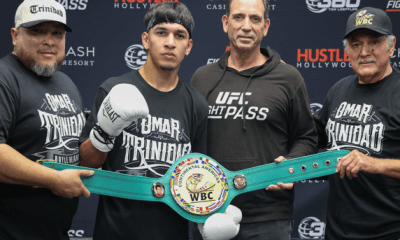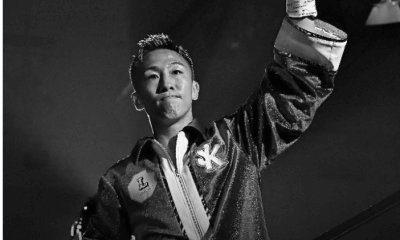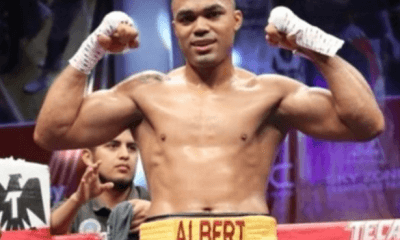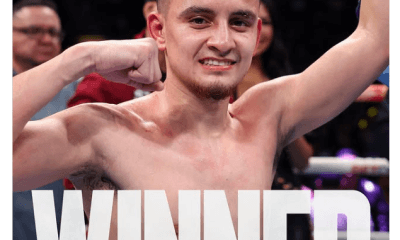Canada and USA
The 50 Greatest Featherweights of all Time Part Five: 10-1
GREATEST FEATHERWEIGHTS, PART V: It is possible that the Top Five listed below is the single finest collection of fighters I have assembled in running down the Top Fifties in six of the eight classic weight divisions. As a ten, it may not measure up to Middleweight and Lightweight, but as a five, the Featherweights are right there with the very best.
Happily, these five all but picked themselves with only #6 at any time during the editing process listed amongst the five greatest; even better, the #1 was a natural choice, perhaps for the first time since Heavyweight. In fact, once the arguments about #10 v #11 and #2 v #3 had calmed down, this final entry in the Featherweight series pretty much wrote itself.
After the agonies of Part Two and Part Four, this was a very welcome change.
So listen.
This is how I have them:
10 – Alexis Arguello (77-8)
We open The Ten with a professional’s professional, a puncher of wonderful accuracy and power who matched brutality with elegance and elegance with destruction.
Arguello introduced himself to world-class boxing in the traditional manner, with a decimation of a former linchpin; scheduled for ten rounds with Jose Legra, he cracked him out in one, turning heads from Nicaragua, where they already knew him to be special, to Inglewood, where he would soon be crash-landing. He did run afoul of the elegant Ernesto Marcel in 1974, dropping a decision while underweight at 122lbs, but at 126, he would be near invincible.
Art Hafey, ranked the #5 featherweight in the world, was the fighter unlucky enough to cross Arguello’s path in an elimination bout later that year; the Nicaraguan steamrolled him in five. His next major challenge was major indeed: Ruben Olivares. What this fight underlined was Arguello’s size at featherweight. Olivares was a natural bantamweight so for him the sight of the 5’10 Arguello, must have been a particularly distressing one, but even for natural feathers he was intimidating. Not that you would have known it in the Inglewood Forum that night as Olivares rattled Arguello to his bones on numerous occasions before succumbing to a devastating left hook that appeared to travel around an inch. Olivares regained his feet and fought on like a man possessed but Arguello exorcised him with another, equally merciless punch.
He showed the division as a whole no mercy, gunning out Leonel Hernandez in eight and, in perhaps in his most impressive featherweight performance, Royal Kobayashi in five. He then departed the division the undefeated champion of the world; one can only imagine the collective sigh of relief that was expelled in his wake.
Other Top Fifty Featherweights Defeated: None.
09 – Eusebio Pedroza (41-6-1)
Eusebio Pedroza, out of Panama City, was at once an elegant, skillful boxer and an aggressive, rough-house mauler, the kind of offshoot you might get if you tried to splice Willie Pep with Sandy Saddler.
Perhaps the most complete featherweight on this list, Pedroza’s career is, by contrast incomplete. Pedroza lifted the WBA title in 1978; Salvador Sanchez reigned as the WBC and lineal champion. The WBA and WBC refused to let their champions face one another; in other words, the governing bodies who are supposed to regulate boxing’s betterment denied us the chance of seeing Sanchez-Pedroza, certainly the greatest featherweight fight never to be made, furthermore denying Pedroza the chance to fight for the lineal title and to meet the only man in the world who could contest his dominance. “Worse than useless” is the phrase you are looking for.
When Sanchez tragically passed it was Pedroza who picked up the pieces, lifting the lineal title in 1983. He managed just four defenses of this, the legitimate title.
His standing among the ten greatest featherweights is, nevertheless, guaranteed. Although he failed to match the very best in the world often enough to appear in the top five, he knocked off numerous contenders, as famous for his otherworldly stamina as for his viciousness, two attributes partly responsible for victories over the likes of Jose Caba, Rocky Lockridge, Pat Ford, Ruben Olivares, Hector Carrasquilla and Cecilio Lastra. Very much the scourge of the division upon the passing of Sanchez, if he was occasionally drawn into close and even controversial wars that ended in narrow decisions in his favor he was more often dominant and deadly.
Sanchez may have sealed his legacy. We will never now, thanks to the absurd machinations of the alphabet bandits.
Other Top Fifty Featherweights Defeated: None.
08 – Johnny Kilbane (49-5-7, Newspaper Decisions 61-11-8)
Johnny Kilbane’s title run was enormous, spanning 1912 to 1923 when Eugene Criqui savaged the old man with a body attack before stopping him with a right to the jaw in six.
Fade back a decade and we see Kilbane pulling a similar trick against champion Abe Attell. Then, Attell was the fighter with the miles on him, then, Kilbane was the hungry lion. An underdog, he made the fight, pushing the champion and reacting to his litany of fouls with patience and skill. He outfought Attell in the clinches and out-boxed him with the long left when Attell tried to pressure him. It was a masterful performance and one worthy of crowning a new champion.
Now things get a little odd. Kilbane was the champion, it’s true, and no other claims are now recognized, but in the next eleven years, Kilbane staged just four successful defenses – and won just two of them.
He met Jimmy Walsh for the title three months after defeating Attell and the two boxed a draw. The following year he staged a defense against Johnny Dundee. The result, again, was a draw. For the next featherweight title fight, the public had to wait three years, although Kilbane’s performance against feared puncher George “KO” Chaney was stunning; Chaney was on 25 fight unbeaten run, Kilbane dusted him in just three rounds. The king then took an astonishing five years off from the championship ring before returning to defeat Danny Frush by knockout in the seventh.
It’s odd, but as always, it must be properly understood. While Kilbane was not fighting in announced, promoted title fights, he was fighting, and for the most part at quite the lick and against good competition. He met Dundee for the title in 1913, and managed only a draw – but he defeated Dundee in a non-title fight four months after defeating Walsh. More, Kilbane boxed in an era where any knockout loss might be considered a passing of the torch.
Complicating matters further, Kilbane boxed in many no-contests, where newspaper men rendered an unofficial decision if no stoppage occurred. So what we have here is a situation where Kilbane boxed four successful title defenses but, also, in a sense, boxed dozens of them, all while finding time to step up and beat lightweights like Benny Leonard and Freddie Welsh.
Kilbane was like a name gunslinger, everyone wanted a piece of him. He dealt with that by winning, winning, winning and although his featherweight legacy is something of a hotchpotch as a result of the culture of his era, his lengthy title reign holds considerable weight.
Other Top Fifty Featherweights Defeated: Johnny Dundee (20), Abe Attell (Top Ten)
07 – Freddie Miller (184-29-5; Newspaper Decisions 25-2-2)
I always feel that a man who amasses one hundred career victories is especially to be admired as a winner. Training as near to the quill as he can before coming up to scratch and outfighting one hundred men trained to beat you is a sure testimony to an indomitable will.
Freddie Miller has two-hundred career victories, and the overwhelming majority were at featherweight.
Every time I compose one of these lists I run across at least one fighter who is, inexplicably, bereft of credit, but it is rare to see one make the top ten. Miller warrants an honorable mention for the IBRO’s top twenty at the weight, but even the great fight-man Charley Rose, not noted for his shyness in favoring the old-timers, neglects to place Miller in his ten. For me, he is a lock.
Miller assassinated the featherweight division of the 1930s. No fighter ranked at the summit for longer during that decade than Miller, not Kid Chocolate, not Battling Battalino, not Henry Armstrong. In that time, he defeated a cacophony of fighters ranked in the divisional top five, including Tommy Paul, Eddie Shea, Frankie Wallace, Baby Arizmendi, Nel Tarleton and Young Rightmire. Of those ranked from 6-10, he took Lew Feldman, Rodolfo Casanova, Petey Sarron, Vernon Cormier and Maurice Holtzer. Other significant scalps included Abie Israel, Panama Al Brown and Chalky Wright.
Some of these names will be familiar, either because they appear in discussions elsewhere for the top fifty, they rank among the top fifty, or for other fine reasons, including their pre-eminence in the division at the time.
Miller’s status as lineal champion, it is true, is subject to debate. For Ring Magazine, he was just that, for others, his claim is debatable. Wherever you stand on that issue, consider that Miller went undefeated in title fights between 1932 and 1935, a total of fourteen contests which took him to Britain, Spain and every corner of the United States.
When he was finally defeated by Petey Sarron by majority decision in 1936, his credentials as a great featherweight had surely been proven beyond doubt. Perhaps Miller’s limitations as a puncher explain the lack of respect his fantastical exploits deserve, but as a ring general he may be without parallel at the poundage; regardless, he was a fighter who excelled at the one thing all the greats specialized in: winning.
Other Top Fifty Featherweights Defeated: Baby Arizmendi (32), Chalky Wright (30), Battling Battalino (ND, 2).
06 – Salvador Sanchez (44-1-1)
When Salvador Sanchez met Danny Lopez in 1980, he was not particularly well known, nor had he done much to build a reputation that would have made him well known, despite his riding a thirteen fight winning streak. His opposition, though perhaps not quite soft, had been questionable and he had yet to win a fight over a distance longer than ten rounds.
Nor was there great surprise when Sanchez made the early running against Lopez – after all, almost everyone did. What surprised was that, come the championship rounds, he was still battering Lopez around the ring, a superb defense barracked by an excellent chin allowing him to throw concise, compact punches without fear of reprisals. Happily standing toe-to-toe with the champion, Sanchez stopped Lopez in the thirteenth round, hammering him into submission like so much of the limited competition he feasted on throughout the early part of his career.
As the 1980s dawned, so did the title reign of Sal Sanchez, and it was to be a brilliant one. His first defense was perhaps his toughest, against the #2 contender Ruben Castillo. Castillo and Sanchez were almost identical physically, the same age, the same height and of course the same weight; the only significant difference was Sanchez’s advantage in reach. Castillo was then unbeaten outside of a knockout loss to Alexis Arguello, in which he had gathered invaluable experience against a rangier fighter; he applied this against Sanchez, feinting and circling to draw Sanchez across him before throwing the left. It’s beautiful to watch and brought Castillo many of the early rounds; Sanchez made a wonderful adjustment, introducing a shepherding jab and patiently holding his line while applying pressure. Nevertheless, I didn’t see Sanchez ahead until the eleventh in what is my favorite of his performances; in the championship rounds, he assumed control, winning three of the last four.
In his second defense he stopped Danny Lopez for a second time and then matched the huge Ghanaian Pat Ford, a giant of a featherweight who towered over Sanchez. To say the Mexican was troubled in this fight is an understatement and he needed his customary late rally to pull out the decision, winning twelve through fifteen on my card against a game, awkward opponent.
This fight confirmed Sanchez over the distance. He proved it over and again in what were glory days for the featherweight title. He scored a dominant fifteen round decision over the excellent Juan Laporte, ranked #3, stopped #6 Roberto Castanon in ten, crushed the legendary Wilfredo Gomez in eight, staging two more defenses before his legendary contest with Azumah Nelson, a fifteenth round knockout over an opponent he had perhaps taken a little lightly.
Sanchez was repeatedly troubled through this glorious title run which makes me wonder about his future had he not been tragically killed in a car crash in 1982. He had the generalship, stamina, jaw and punch selection to trouble just about anyone but that slow start he was often guilty of may have hurt him against a fighter like Pedroza, or some lesser contender.
But maybe, just maybe, his ability to think on his feet, to adjust across the ring, would have bought his way out of trouble against all of them. Had he caught a cab instead of getting behind the wheel that day, and had he abandoned his plans to retire young, he might have had talent enough to stage an assault upon the top three here; perhaps even the top one.
Other Top Fifty Featherweights Defeated: Azumah Nelson (25), Danny Lopez (19).
05 – Abe Attell (72-9-16; Newspaper Decisions 39-9-6)
Abe Attell was spiteful, ruthless and a natural born champion. He ruled the featherweight division for almost a decade before Kilbane came to the throne, meaning that between them, the two spent most of the first quarter of the twentieth century atop the pile. Attell rates above Kilbane due to their different approaches to defending championship honors. Kilbane fought four successful advertised defenses, Attell staged more than twenty. He was a monstrous champion who left a colossal psychic scar on the division’s history.
But my treatment of Attell’s reign is different to that which is normally held. The key fight is his 1904 defense against Brooklyn’s tough Tommy Sullivan, lost by way of a controversial fifth round knockout. The knockout punch – for Attell was knocked out – was a left uppercut, driven to the beltline with such force it was said to have lifted him from the canvas and reintroduced him to it face first; Abe claimed to have been fouled. The referee called a doctor to the ring and he examined the brutalized party; in fact, three physicians in all examined Attell while he writhed in apparent agony in full view of an agitated crowd and none found any evidence of his being fouled, at which point Sullivan was named the winner.
Attell, however, completely ignored the judgment of the referee and continued to defend “his” featherweight title just as if the loss had never occurred. Such were the vagaries of title politics in “the good old days” that his claim was generally acknowledged. Meanwhile, BoxRec lists no title defenses of the title by Sullivan, although the timeline was restored when Sullivan was defeated by the mysterious Hugh McPadden, who then retired, allowing Attell to pick the title up once more by beating Jimmy Walsh in 1906.
Even this treatment, which sees Attell credited with two shorter title runs rather than the longer one he is generally accounted with, renders Attell’s raw statistics stunning. No featherweight managed more lineal defenses, even if he was a little too keen on no-decision bouts for the taste of some.
His decision to sit on the title rather than defend it between 1909 and 1912 was also unfortunate but in the end few champions at any weight measure up.
As an all-time divisional number five, he may be without peer.
Other Top Fifty Featherweights Defeated: Owen Moran (26), Johnny Kilbane (Top Ten), George Dixon (Top Ten).
04 – George Dixon (67-29-51; Newspaper Decisions 6-2-4)
“By his pluck and integrity,” wrote the St.Louis Republic in the early 1900s, “[George Dixon] has done more to gain consideration for dark-skinned men than ever Frederick Douglas did.”
The article from which this quote is drawn is spotted with the kind of casual racism that marred much of the era’s press, and, of course, the statement itself is more than debatable. But it is instructive. Everyone admired Dixon, for his heart and for his skill. By ’01 Dixon was losing far more than he was winning, broken down and fighting men who would not have made worthwhile sparring partners during his incredible pomp, but still the white press continued to exalt him. His wonderful skills vanished with the old century, but the final decade of that century had belonged to him, perhaps more than to any other pugilist in the world.
During that time, Dixon went 16-2-1 in featherweight title fights.
Even these two losses are mitigated by the fact that he defeated both of the men who beat him. After the great lightweight champion Frank Erne bested him in 1896, Dixon agreed to face him in a rematch in New York despite the fact that Erne came in eight pounds above the limit. Facing a great fighter who had previously scored a victory against him and now suffering a weight disadvantage, it should be obvious that Dixon was the underdog ringside, but he was a thinking fighter. Dixon parked his two best punches, a steaming left to the body and a right hand aimed at the jaw and instead stood straight, neither swarming nor crouching, and invited the bigger man onto him, casually picking him off as he was attacked. Erne came on in the final rounds of the twenty-five, but by then Dixon had left him eating dust.
The other man to defeat Dixon was Solly Smith who took his title in 1897. Previously, Dixon had stopped Smith in seven and so he pursued a rematch. Dave Sullivan, a slick, quick Irishman beat him to the shot and when Smith broke his arm (he never properly recovered) in his match with Sullivan, Dixon swept in for the title shot. Sullivan was trapped on the end of Dixon’s jab early, but was boxing well by the tenth when he walked onto a Dixon uppercut, quite possibly the victim of one of “Little Chocolate’s” little traps; corner interference saw the championship returned to its rightful owner.
That was 1897. He would hold it in multiple defenses until the monster Terry McGovern came calling in 1900. The featherweight who could fend off that stick of dynamite when past-prime has not yet been born; Dixon fell in eight.
Before that, in spells, he seemed invincible. Today, Dixon seems to enjoy a reputation based primarily upon technical excellence and defense, and certainly he excelled in these areas; he was also, however, a little war-machine, aggressive, direct, armed with good punching power and, in his prime, near limitless stamina.
He wound down his career in a disaster of losses and draws, scrabbling for chump change, but, as we have seen, even then he was respected as perhaps the greatest exponent of pugilism the world had then seen.
Other Top Fifty Featherweights Defeated: Solly Smith (43).
03 – Vicente Saldivar (37-3)
As I’ve written before, the term “cleared out the weight division” is perhaps the most abused in boxing. This is because it almost never happens; there’s always someone out there.
That being said, Vicente Saldivar perhaps came as close as any man to achieving the mythical clearout; he roared through the featherweight division of the 1960s with few left behind to tell the tale of his passing unscathed.
The road to the world title was opened up in a fascinating contest between future greats as he was matched with the soon-to-be lightweight champion Ismael Laguna. That fight was not without its controversies and there were some in attendance who believed Laguna was good for the nod. Highlights of that contest can be found on the McGrain boxing channel on YouTube; what is available shows a close contest but certainly not one that would lend itself to serious objections. Whatever the detail, Saldivar got the nod and in his next contest he met with Sugar Ramos for the featherweight crown.
Ramos, a 2-1 favorite, was cloaked in an unfortunate aura of danger since he took the life of Davey Moore in claiming the title, and he oozed confidence as he entered the bull-ring that held the fight-ring where he was to make his fourth defense. Early, he had success with a long jab to the body, and some rushing, wild hooks. Saldivar, poisonous, squat, compact, studied Ramos in turn and as the fight progressed, he began to find him. Saldivar had learned this wonderful habit, but when he found a fighter it tended to be all at once. Suddenly Saldivar, who had been trying to open up his victim with a jab, a one-two, a sometime body-attack, could suddenly be found throwing eight punch combinations. How the fight might progress would, in the main, be decided by how the opponent dealt with such terror and Ramos did not deal with it well. Through the tenth and eleventh rounds, Saldivar achieved rare heights, even for a championship ring, finding seamless squads of punches thrown in neat, compact bunches, all the while, dipping and sliding the increasingly desperate winging blows coming his way in return. These two rounds – and the sick punishment that preceded it – may have been the absolute peak of Saldivar’s career, but we have plenty to choose from. When Ramos failed to answer the bell for the twelfth, a new and violent era was begun.
Raul Rojas, the world’s #2 contender, was thrashed and stopped in fifteen; the gutsy Howard Winstone, also a top contender, was crushed twice on his home soil and once in Mexico; Floyd Robertson, who had been involved in a rather bizarre fifteen round split decision loss to Sugar Ramos, was blasted out in two; the #1 contender Mitsunori Seki was outpointed, rematched for the temerity he showed in going the distance, then slaughtered in seven.
Saldivar retired after the third Winstone fight, but returned and after being dropped for a count in the third, battered the new #1 contender, Jose Legra, with a body attack before restoring himself to title honors with a victory over Johnny Famechon.
Saldivar was an insidious force of nature, someone who built his fight-plan from the bottom and delivered the knockout when he was ready and not before. As for the possibility of his being out-pointed, he was a brilliant technician with superb speed and a patience matched only by that of Salvador Sanchez. Age caught up to him in the form of the inexhaustible Kuniaki Shibata but by that point two stints as world champion and a record of 9-0 in featherweight title fights against excellent competition had already guaranteed his immortality.
Other Top Fifty Featherweights Defeated: Jose Legra (50), Johnny Famechon (38), Howard Winstone (37), Sugar Ramos (18).
02 – Sandy Saddler (145-16-2)
Beast.
Sandy Saddler was the most brutal featherweight in the division’s history, a stylist who fought with a puncher’s hate, a man of absurd dimensions who fought in the crouch of a sawn-off swarmer, a contradiction on skinny legs that used any and every trick in the book to bend his withering opponents to his will.
And yet, the secondary elements of his featherweight legacy are unsatisfying. In part, this is due to his pound-for-pound excellence which saw him spend two years defending the lightly regarded 130lb title, a weight-limit that probably suited his 5’8 frame a little better than 126lbs; but it is also true that he failed to find an extensive list of impressive names to batter in the same way that Saldivar or Miller did. He caught a close decision victory against #4 contender Charley Riley towards the end of 1950, battered Ray Famechon into submission in five rounds four years later, posted a successful title defense against the underrated Teddy Davis in a foul-filled affair the year after and posted a final defense against Flash Elorde, who had beaten him in ’55 but was stopped on a cut with the title on the line. Saddler tended to find a way with the title on the line.
Nevertheless, here he stands, on merit, at #2, and what holds him here is one thing: his three vicious dominations of Willie Pep.
Between 1940 and 1951 only one featherweight was able to best Pep, and that featherweight was Saddler. Their first fight, from 1948, saw Pep made a strong favorite and with good reason – he was as brilliant and dominant a champion as had ever lived – but there were reasons to favor Saddler. For two years he had been trailing Pep and was eerily confident of his chances. This confidence was borne out. He found the champion with ease, busting him up, cutting him, and stopping him in four with a brutal left hook. After losing a rematch Saddler auditioned with hate for his rematch, winning twenty-three in a row, eighteen of them by stoppage. In 1950, they met once more.
“He got me in a double arm-lock,” sulked Pep after his ninth round quittage, apparently suffering from a damaged shoulder.
“Body punches,” was Saddler’s riposte. “I could see in his eyes something was wrong but I didn’t think it was no shoulder.
Whether by way of brutality in the clinch or brutality in the body attack, Saddler had carried the day. A fourth meeting was inevitable; it was also a farce. Saddler was slipping by this time and he met Pep between losses to Tony DeMarco. The fight ran badly out of control, as savage a foul-fest as has ever been seen in a New York ring. No featherweight, alive or dead, could win such a contest against Saddler.
Saddler’s overall offense, the knotted branch of his summary attack, was too much for Pep. He always found a crack in that genius defense for one form of torture or another. Pep, basically unbeatable at the weight according to all other evidence, bowed three times to Saddler. The first of these is perhaps the greatest win in the history of the division.
Other Top Fifty Featherweights Defeated: Willie Pep (Top Ten).
01 – Willie Pep (229-11-1)
The toughest thing, in my opinion, in picking apart boxing history is ungluing the stardust that holds it together. The men who perpetuated the myths and legends that make the bygone days of boxing the most marveled at in sports were all friends to the fight game, but sometimes they did more harm than good. Pick your favorite boxing story pre-1960 and set off to find out where it comes from. Often, it is not easy.
My fear, and in a small way, my expectation, was that I might not like what I would find in digging into the details of Willie Pep’s legacy. I expected, if I am honest, to find shortcomings that I was unaware of before the work began, that perhaps the de facto number one for a thousand featherweight lists would come up short when placed under the microscope, that perhaps, even, Sandy Saddler, who after all defeated him three times, might be the unfashionable choice I would have to explain.
But none of this is true. Willie Pep is the greatest featherweight who ever lived. It is made true by his championship reigns, by his indefatigable spirit, by his brilliant stylings and even, to my great relief, by the depth of his stunning resume.
Here is a list of the made men that Willie Pep defeated:
Ray Famechon, Charley Riley, Eddie Compo, Sandy Saddler, Humberto Sierra, Jock Leslie, Jackie Graves, Sal Bartolo, Phil Terranova, Charles Lewis, Manuel Ortiz and Chalky Wright.
It is a longer list of ranked contenders or significant scalps taken than any of the other featherweights in the Top Fifty by my measure.
But it was the manner in which he bested them that really sets him apart.
Willie Pep was not a technician in the strictest of terms because his style is not one that should ever be taught to prospective pugilists. That would be like asking a nine year old with good spatial awareness to equal the Mona Lisa. Rather, Pep was fundamentally sound, in that he rarely if ever overstretched his physical abilities during technical execution, the definition of fistic legitimacy.
The reality was perfection even if the technique was sometimes questionable. What I mean by this is that he did things that would be deemed imperfect in the strictest sense of technical excellence but those things yielded impossible results. It is not enough to say “he got away with it” – he re-defined “it” for his own ends, like all true mavericks.
Based primarily upon this disturbing mixture of sound and unsound footwork, which both removed him from and introduced him to punching range depending upon his needs, Pep worked to the tiniest of margins, perfect for inducing foolish risks in otherwise sound opponents, but failing to translate somewhat to the bigger divisions against fighters with longer reaches – Pep’s best was, inarguably, at featherweight.
He feinted with those feet, boxing high on his toes whether pivoting, coming in or coming out, coming down only when it was safe for him to do so. But Pep hacked boxing’s Matrix. It was safe for him to punch when mortal fighters had to cover up. Pep, more any other fighter, boxed in perfect harmony with his body, dancing to a tune nobody else could hear.
All this birthed perhaps the greatest hot-streak in boxing: 135-1-1, with neither draw nor loss coming at featherweight.
That other number, 1-3 against the best fighter he faced, Sandy Saddler, is a little disturbing and I understand the urge to want to stress the timing of Pep’s serious injuries in a plane crash to explain some of it away. The truth is, there is no need. Despite his record against Saddler, Willie Pep is far and away the greatest.
This was to my relief, nearly as great as the joy I feel when watching the precious rounds of film during which we can watch Pep box.
Other Top Fifty Featherweights Defeated: Sal Bartolo (45), Chalky Wright (30), Sandy Saddler (Top Ten).
To those that have taken the time to read this series of articles from first to last, I thank you.
Check out more boxing news on video at The Boxing Channel.
-

 Featured Articles3 weeks ago
Featured Articles3 weeks agoThe Hauser Report: Zayas-Garcia, Pacquiao, Usyk, and the NYSAC
-

 Featured Articles2 weeks ago
Featured Articles2 weeks agoOscar Duarte and Regis Prograis Prevail on an Action-Packed Fight Card in Chicago
-

 Featured Articles1 week ago
Featured Articles1 week agoThe Hauser Report: Cinematic and Literary Notes
-

 Book Review4 days ago
Book Review4 days agoMark Kriegel’s New Book About Mike Tyson is a Must-Read
-

 Featured Articles4 weeks ago
Featured Articles4 weeks agoManny Pacquiao and Mario Barrios Fight to a Draw; Fundora stops Tim Tszyu
-

 Featured Articles4 weeks ago
Featured Articles4 weeks agoArne’s Almanac: Pacquiao-Barrios Redux
-

 Featured Articles3 weeks ago
Featured Articles3 weeks agoRemembering Dwight Muhammad Qawi (1953-2025) and his Triumphant Return to Prison
-
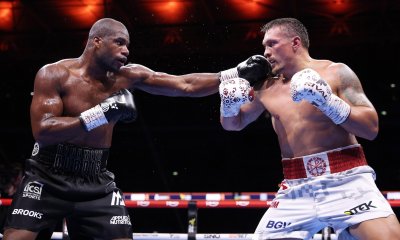
 Featured Articles4 weeks ago
Featured Articles4 weeks agoOleksandr Usyk Continues to Amaze; KOs Daniel Dubois in 5 One-Sided Rounds


